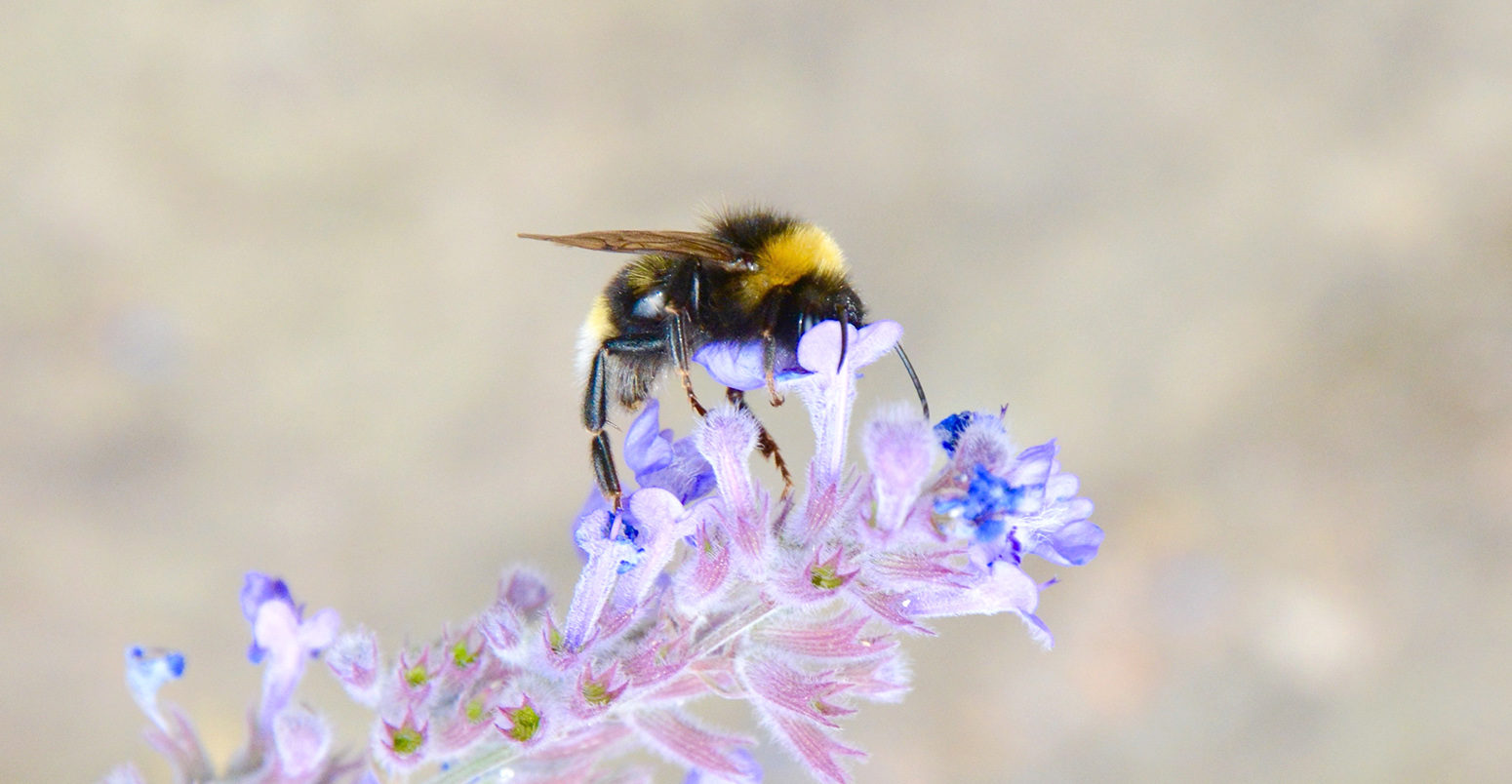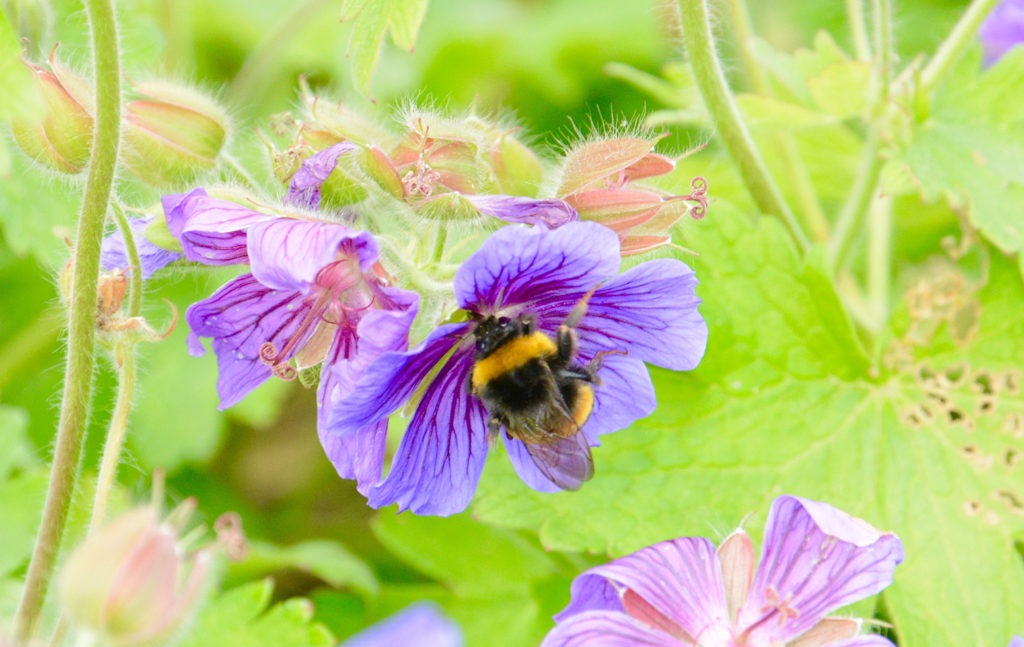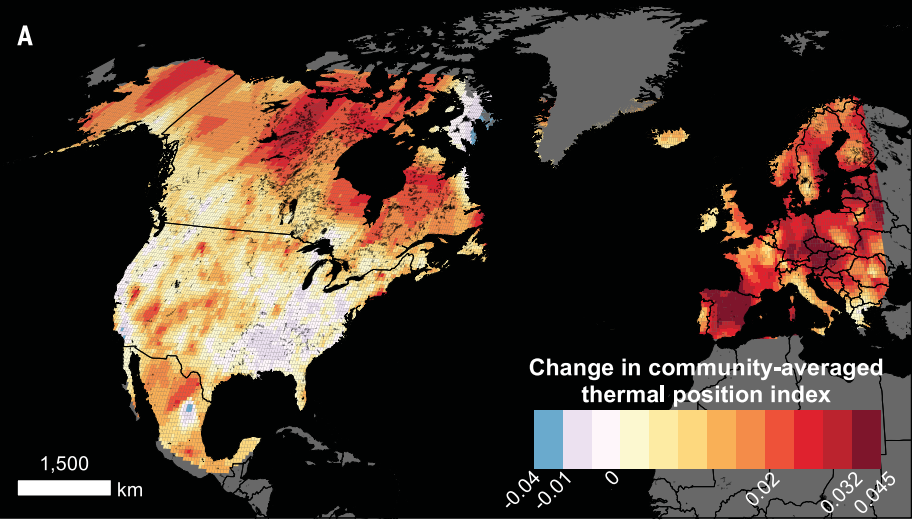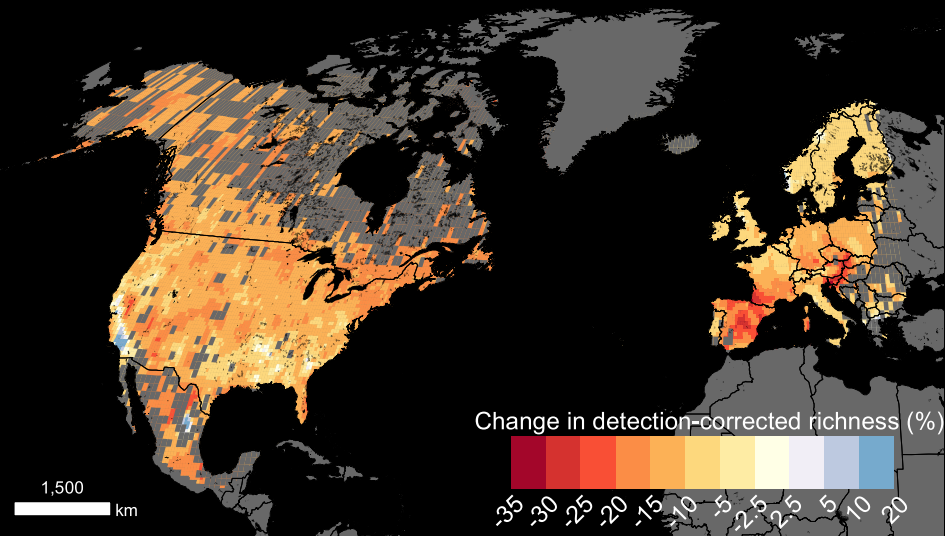
Climate change driving ‘rapid and widespread’ decline of bumblebees
Daisy Dunne
02.06.20Daisy Dunne
06.02.2020 | 7:00pmThe chances of spotting a bumblebee have dropped by almost half across North America and by 17% in Europe from the mid-20th century to near present day, a study finds.
Shifts in temperature and rainfall are pushing bumblebees to their ecological limits across both continents, according to the analysis published in Science. This is driving “rapid and widespread declines” across 66 bumblebee species, the authors warn.
The impact of climate change on bumblebees is greatest in warmer parts of the northern hemisphere, including Mexico and Spain, the research finds.
Bumblebees have also expanded their range in some cooler regions. However, the extent of their range expansion is far smaller than the extent of range lost, the authors say.
This has contributed to population declines that could have “unknown consequences for the provision of ecosystem services”, they add.
Bumblebees also face threats from habitat loss and exposure to pesticides – meaning rapid warming could prove to be “the final straw” for some species, another scientist tells Carbon Brief.
Bumbling
Bumblebees are a group of more than 250 species found mainly in the higher latitudes of the northern hemisphere. (There are 20,000 bee species found across the planet, the most commonly cultivated by far being the European honey bee.)
Their defining characteristics – a round shape and thick fuzzy coat of hair – make them well suited to life in cooler climates, but vulnerable to temperature extremes, explains Prof Dave Goulson, a bee biologist from the University of Sussex. Goulson, who was not involved in the study, tells Carbon Brief:
“Bumblebees are large and furry as an adaptation to cold climates. Unlike most insects, they thrive in cool, temperate climates and are scarce in warmer regions where they tend to overheat in hot weather.”
To study how climate change could be affecting bumblebees, the researchers pieced together bumblebee-sighting datasets from across North America and Europe.
Together, the datasets contain more than 500,000 observations of 66 bumblebee species stretching back for more than a century. Study authors Peter Soroye, a PhD student, and Prof Jeremy Kerr, biologist, both from the University of Ottawa, explain to Carbon Brief:
“Because this dataset extends back more than a century, it can tell us where these bumblebees used to be, but also where they can be found today. It’s like a biodiversity time-machine. We tracked local extinctions, places where bumblebees have held on over a century of climate change, and even places where they established new populations.”
The researchers compared this observations data to high-resolution climate and land-use data. “This gave us the power to tell the difference between effects that might be a result of habitat changes, like when someone converts an area into a cornfield, and those that are a result of increasing climate chaos,” say Soroye and Kerr.

Intolerable heat
The results show that the average chances of a bumblebee occupying a given area in North America have dropped by 47% from the period 1901-1974 to the period 2000-14. In Europe, the chances have fallen by 17%, on average.
These declines match closely with the “frequency and extent to which climate conditions approach or exceed species’ observed climate limits”, the authors say in their research paper.
The map below, taken from the paper, gives an indication of where bumblebees have experienced temperature extremes above what they are known to tolerate. Lead author Soroye explains:
“Our ‘thermal position index’ is a calculation of how often and how badly temperature extremes throughout a whole year in a region push species past what they’ve ever experienced before. We took this calculation and applied it to each regional community of bumblebees in North America and Europe.
“Doing this we can see where entire bumblebee communities are increasingly being subjected to temperature beyond what they can handle (dark red) – and the rare spots where things are much cooler for them then previously (dark blue).”
On the map, the changes are shown for 2000-15, when compared to 1901-1974.

The results show that bumblebees have been pushed beyond their temperature limits in vast areas across both continents, note Dr Jon Bridle and Dr Alexandra van Rensburg in a commentary accompanying the new research. They say:
“Bumblebee populations showed substantial declines at southern (warming) ecological margins, but fewer compensating population expansions at northern (cooler) margins, suggesting widespread declines in bee biodiversity across both continents.”
These “warming ecological margins” include Spain and parts of Mexico. However, even relatively cool regions, such as the UK, have seen declines, says study author Dr Tim Newbold, an environmental change biologist from University College London. He tells Carbon Brief:
“The UK is consistent with the rest of Europe in showing declines. Until now, the declines have been relatively smaller in northern Europe (including the UK) than in southern Europe. But as climate change accelerates in the coming decades, we would expect an acceleration in the declines of UK bumblebees as more species are pushed beyond the temperatures they can handle.”
The researchers also looked at how bumblebee diversity has changed from 1901-1974 to 2000-14 as a result of climate change.
The map below shows how bumblebee species diversity (or “richness”) has changed in North America and Europe, with orange to red showing declines in richness and blue showing increases. The map only shows changes that are specifically linked to changes in climate.

The results show there is a gradual “fade-to-black” for bumblebee diversity across regions in North America and Europe, including the UK, says Kerr:
“If you surveyed an area in, say, 1970, chances are you’d see more species in that area than you would if you sampled it nowadays.”
‘Final straw?’
A decline in bumblebees could have “unknown consequences for the provision of ecosystem services” in many world regions, the authors note in their research paper. One such “service” provided to humans by bumblebees is pollination, explains Soroye:
“Bumblebees pollinate a lot of the fruit and vegetables that colour our plates…tomatoes, berries, squash. Bumblebees are very large and specialise in what we call ‘buzz pollination’ – where they vibrate flowers so much that it knocks off the pollen. Some fruit and vegetables need to be pollinated like this.”
The findings suggest that climate change could push some bumblebee species towards extinction, says Goulson:
“This new study suggests that climate change has already played a role in driving bumblebee declines, particularly at the southern edges of their ranges. Bumblebees also suffer from many other pressures, particularly habitat loss and exposure to pesticides, and it seems likely that a rapidly warming future climate may be the final straw for many of them.”
However, there are still reasons to be hopeful about the future of bumblebee populations, say Soroye and Kerr:
“We have created and tested some tools and techniques that will let us zero in on spots where we need to intervene to help save bees – rare ‘bright spots’ where bees are still doing well and have managed to persist despite climate change.”
The study does not investigate how bumblebees could be best protected, but previous research suggests that incorporating more flowers fed on by the insects into rural and urban areas could be a key step in their conservation.
The research is a “step forward” in reporting on insect declines with “statistical confidence” says Dr Colin Carlson, a global change biologist from Georgetown University, who was not involved in the study. He tells Carbon Brief:
“This dataset Soroye and colleagues used is breathtakingly detailed, to a point that would be nearly impossible for any other invertebrate system. It’s an important piece of evidence in a much bigger conversation about invertebrate extinctions and global ecosystem collapse.”
The findings are “consistent” with earlier research finding that “climate change is posing a risk to insects”, Prof Rachel Warren, a global change scientist from the University of East Anglia, tells Carbon Brief.
Soroye et al. (2020) Climate change contributes to widespread declines among bumble bees across continents, Science, https://science.sciencemag.org/cgi/doi/10.1126/science.aba6432
-
Climate change driving ‘rapid and widespread’ decline of bumblebees
-
Climate change could be ‘final straw’ for bumblebees

